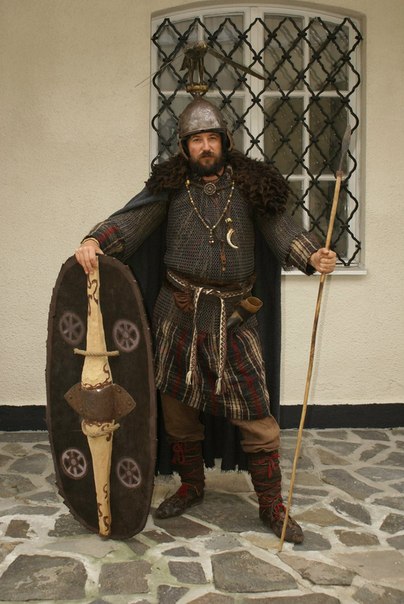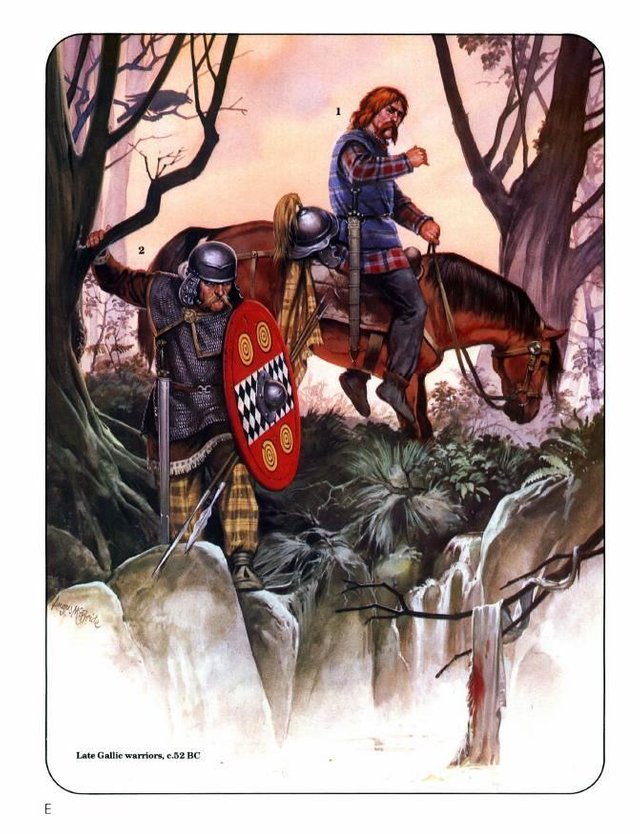Forgotten Celtic tribes part 2
Boii
Boii were a famous tribe of La Tene Celts, which was located to the north of the Alps and east of the Rhine. They started expanding around fourth or third century BC. We don't have a precise record of their migrations. But thanks to the Romans, we know that group of Boii managed to get as far south as modern cities of Bologna and Modena in the fourth century BC. There is a possibility that one group settled in Anatolian Galatia as the Tolistoboioi. Boii archaeological relics are found in Slovakia, the Czech Republic, Hungary, Austria, and Poland. And one group went around 1st century BC in Gaul, where they settled at Gorgobina after being defeated alongside the Helvetii by Julius Caesar.
The Boii remained in the Po valley until the end of the 3rd century BC, defending their lands both against other Celts and against the growing Roman hegemony. Defeat at the Battle of Telamon and alliance with the ultimately defeated Hannibal meant the end of their power there, but the Boii in central Europe remained a vibrant and significant group.
When a contingent of Boii warriors joined the Helvetii on their 59 BC migration westwards into Gaul, those who remained in their eastern homeland were already facing the foes that would eventually defeat them. First the Dacians and then the Marcomanni. Around 40 BC the Dacian king Burebista won a major victory over the Boii in the Hungarian plains, which proved decisive in ending a century or more of Boii dominance in that region. The Boii who had gone with the Helvetii fared no better. After defeat by Caesar, the Aedui settled the surviving Boii at Gorgobina, from whence they, unfortunately, supported Vercingetorix, and then faded from history. In their homeland, their days as a viable political force ended in 9 BC, when Maroboduos led the Marcomanni into Boii-haimoz. The Boii were either absorbed into the Germanic society or left the home of their origin for the last time, crossing into Roman territory and leaving only some place-names behind. There are few scholars who believe the emergence of the Baiovarii (later known as the Bavarians) 500 years later shows the persistence of one of the greatest of the Celtic peoples - or at least the memory of their name.

Brigantes
This large tribe was a federation of smaller communities. Their territory covered all of the areas between the Humber and the Tyne. At the time of the Roman invasion of 43AD, the Brigantes were arguably the most powerful Celtic tribe in Britain. Thanks to their pro-Roman queen Cartimandua, they become friendly with Romans since the beginning of the invasion. They help her keep the throne after her husband Venetius led an anti-roman revolt against her. She returned the favor by betraying Caratacus to the Romans. Caratacus was at the time the most influential resistance leader. But her reign didn't last for long. She married Venetiuses armor-bearer and eventually fled Brigantine territory and was never heard again.
In 73 AD the governor Petillius Cerialis invaded and defeated Venutius, but continued unrest led to Agricola finally annexing Brigantine territory for good in 79 AD. They rebelled again in 138 AD against Emperor Antonius. The Romans under Lollius Urbicus quickly put down the revolt. In 154 AD the Brigantes rebelled yet again, with similar results. Some archaeological evidence suggests that there may have been a Brigantine presence in Ireland. Excavations on the island of Lambay show Brigantine artifacts dating from the end of the first century AD.

Galatia
Galatia was a Celtic kingdom which was founded in Asia Minor (modern Turkey) in the third century BC. A massive group of Celtic tribes for the unknown reason decided to migrate to Anatolia. On their path, they caused chaos in Thrace and Macedonia. There they were finally defeated by Pergamum and retreated into central Anatolia. The land became known as Galatia, meaning '’land of the Gaul’s'’. According to Pliny the Elder, their territory lies 'above' Phrygia and includes the greater part of the territory taken from that province, along with its former capital at Gordion (Gordium).
Main tribes become known as the Tolistobogi (Tolistoboges), the Voturi and the Ambitouti. The Galatians periodically launch raids and campaigns and acted as mercenaries. They adopted many aspects of Greek and local culture. Livy, quoting Manlius Vulso who defeated the Galatians in two battles in 189 BC mentioned: "that some of these Gaul’s (Galatians) are a mixed race, truly described by their name Gallogracians." This evidence is further backed up by the inscriptions at Delphi mentioning that among the Galatians were freed slaves of areas that they had swept through.
Being involved in conflicts of Romans, Seleucid and Pontus cost them their freedom. You guessed it; they become the Roman province in 25 BC. Remarkably, the Treveri continue to exist as a recognizable group of Celts. The best-known piece of evidence for that claim is found in St Jerome's (331-420) commentary on St Paul's letter to the Galatians, written in the year 386/387. In those commentaries, he says that the language of the Treveri in the Belgica is similar to that of the Galatians. Apart from the Greek language, which is spoken throughout the entire east of the empire, the Galatians have their own language which is almost the same as that of the Treveri. This also serves to prove the continued existence of the Galatian Celts themselves, four hundred years after their incorporation into the Roman Empire.

Pictures were taken from Pinterest